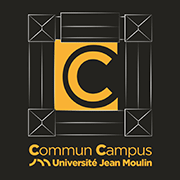AccueilRechercheProgrammes et productions scientifiquesThèsesThèses soutenuesThèses soutenues - 2006-2021Thèses soutenues - 2012
-
Partager cette page
- Recherche,
SUEUR Nicolas
La pharmacie centrale de France, une coopérative au service d'un groupe professionnel (11852-1879).
Publié le 4 janvier 2013 – Mis à jour le 6 février 2013
Thèse en Histoire religieuse politique et culturelle soutenue le 1er octobre 2012
Au milieu du XIXe siècle les pharmaciens fran?ais ont le sentiment que leur monopole sur la vente et la fabrication de médicaments est de plus en plus menacé. Ils sont en effet de plus en plus dépendants, sur le marché, d’autres professions qui délivrent des produits en gros. C’est dans ce contexte de crise que la Pharmacie centrale de France, une coopérative d’achat et de production entre pharmaciens, est fondée en octobre 1852 par Fran?ois-Louis-Marie Dorvault, lui-même pharmacien. L’étude de cette coopérative nous permet de mieux comprendre les liens entre l’industrie pharmaceutique et l’officine. Les historiens de la santé ont déjà très largement montré que l’industrie pharmaceutique contemporaine plongeait ses racines dans l’officine du XIXe siècle. Trop souvent cependant on réduit cette transition à celle d’acteurs individuels. Les historiens sociaux quant à eux ont souvent opposé la grande entreprise au petit commerce, l’émergence de l’un signifiant la disparition de l’autre. Le cas de la Pharmacie centrale de France est, de ce point de vue, original, qui offre à étudier une entreprise industrielle collective portée par des pharmaciens d’officine. Ce passage à l’industrie est per?u de fa?on positive et nécessaire par ces coopérateurs. Aux yeux de Dorvault, la naissance de la Pharmacie centrale va consolider l’officine dans ses fonctions commerciales et scientifiques. Elle n’a pas vocation à supplanter le pharmacien mais à le soutenir en lui permettant de mieux préparer et de vendre des produits de qualité achetés à moindre co?t. Le capital de l’entreprise ne cesse de cro?tre au cours de la période, passant de un million en 1852 à 5 millions en 1878. La Pharmacie centrale est également un succès commercial. Le chiffre d’affaires se situe à 400 000 francs en 1853 et 8 millions en 1878. La puissance de l’entreprise s’incarne à travers des b?timents (usines de Paris et de Saint-Denis) et un réseau de succursales. La complexification du marché, la croissance de l’entreprise et les exigences de rentabilité, la concurrence féroce que se livrent les grossistes répartiteurs poussent cependant la PCF à rompre progressivement avec cette ligne. L’officine, tout en consolidant son monopole sur la vente au détail, voit dispara?tre les fondements de ce monopole, notamment l’élection (le choix des éléments naturels entrant dans la composition du médicament) et la préparation des produits. Les procédures de contr?le, la fabrication des produits, leur diffusion sont désormais centralisées par de grandes entreprises comme la Pharmacie centrale. La PCF accélère ainsi le passage de l’officine-laboratoire vers l’officine-comptoir. Par conséquent, la PCF a joué un r?le dans la redéfinition de l'identité professionnelle du pharmacien : une activité commerciale articulée autour d'un dipl?me. La PCF a renforcé l'industrialisation de la pharmacie en amont et le monopole du pharmacien en aval.
In the middle of the nineteenth century the French pharmacists have the feeling their drug’s monopoly is threatened. They are more and more dependent towards other professions as druggists, herbalists. The Pharmacie centrale de France is a purchase co-operative between pharmacists founded by a Parisian pharmacist Fran?ois-Louis-Marie Dorvault in october 1852. The PCF tries to achieve corporatist and industrial’s goals and allows us to understand the links between industry and the drugstore sector. Historians have already widely shown that the contemporary pharmaceutical industry derived from the pharmacy of the XIXth century. Too often however, we reduce this transition to individual actors. The social historians have often set the big company over against shopkeepers, the emergence of the first meaning the decline of the second. The case of the Pharmacie centrale de France is original on that account, which allows us to study an industrial co-operative between pharmacists. This transition to industry is perceived in a positive and necessary way by these co-operators. For someone like Dorvault, the Pharmacie centrale de France will strengthen the pharmacy in its commercial and scientific functions. The purpose of the co-operative is not to supplant the pharmacist but to sustain him, allowing him to prepare and to sell better medications bought at a lower cost. PCF’s capital never stops increasing during the period. From one million in 1852 the capital reaches 8 millions in 1878. The PCF is also a commercial success. Sales are estimated around 400 000 F in 1853 and 8 millions in 1878. The power of the company becomes incarnated through buildings (factories of Paris and Saint-Denis) and branches network. The PCF unfolds professional, social and scientific projects like the creation of a newspaper, the Union Pharmaceutique, in 1860; the scheme of a pharmacist’s pension fund between 1854 and 1859; the scheme of a drugstore’s insurance in 1863 and 1864; or the organization of scientific concourses. The market’s complexity, the growth of big company, the profitability’s imperatives, the fierce competition between wholesalers induce however the Pharmacie centrale to break gradually with this line. The pharmacy, while strengthening its sale’s monopoly, sees the foundations of this monopoly disappear, particularly the election (the choice of the natural elements entering the composition of the medicine) and the preparation of products. Control procedures, manufacturing, distribution are henceforth centralized by big companies as the Pharmacie centrale de France. The PCF accelerate the transformation of pharmacist’s work and the transition from preparation to sale only. In consequence, the PCF played a part in the redefinition of pharmacist’s professional identity: a commercial activity articulated around a degree. The PCF strengthened pharmacy’s industrialisation above and pharmacist’s monopoly below.
Mots-clés :
Directeur de thèse : Olivier FAURE
Membres du jury :
Sophie CHAUVEAU, Professeur, Université de Belfort - Montbéliard
Christian BONAH, Professeur, Université de Strasbourg
Anne RASMUSSEN, Ma?tre de conférences, Université de Strasbourg
Isabelle VON BUELTZINGSLOEWEN, Professeur, Université Jean Moulin Lyon 3
Olivier FAURE, Professeur, Université Jean Moulin Lyon 3
Président du jury : Isabelle VON BUELTZINGSLOEWEN
Mention : Très honorable avec les félicitations du jury
Equipe d'accueil : LARHRA
In the middle of the nineteenth century the French pharmacists have the feeling their drug’s monopoly is threatened. They are more and more dependent towards other professions as druggists, herbalists. The Pharmacie centrale de France is a purchase co-operative between pharmacists founded by a Parisian pharmacist Fran?ois-Louis-Marie Dorvault in october 1852. The PCF tries to achieve corporatist and industrial’s goals and allows us to understand the links between industry and the drugstore sector. Historians have already widely shown that the contemporary pharmaceutical industry derived from the pharmacy of the XIXth century. Too often however, we reduce this transition to individual actors. The social historians have often set the big company over against shopkeepers, the emergence of the first meaning the decline of the second. The case of the Pharmacie centrale de France is original on that account, which allows us to study an industrial co-operative between pharmacists. This transition to industry is perceived in a positive and necessary way by these co-operators. For someone like Dorvault, the Pharmacie centrale de France will strengthen the pharmacy in its commercial and scientific functions. The purpose of the co-operative is not to supplant the pharmacist but to sustain him, allowing him to prepare and to sell better medications bought at a lower cost. PCF’s capital never stops increasing during the period. From one million in 1852 the capital reaches 8 millions in 1878. The PCF is also a commercial success. Sales are estimated around 400 000 F in 1853 and 8 millions in 1878. The power of the company becomes incarnated through buildings (factories of Paris and Saint-Denis) and branches network. The PCF unfolds professional, social and scientific projects like the creation of a newspaper, the Union Pharmaceutique, in 1860; the scheme of a pharmacist’s pension fund between 1854 and 1859; the scheme of a drugstore’s insurance in 1863 and 1864; or the organization of scientific concourses. The market’s complexity, the growth of big company, the profitability’s imperatives, the fierce competition between wholesalers induce however the Pharmacie centrale to break gradually with this line. The pharmacy, while strengthening its sale’s monopoly, sees the foundations of this monopoly disappear, particularly the election (the choice of the natural elements entering the composition of the medicine) and the preparation of products. Control procedures, manufacturing, distribution are henceforth centralized by big companies as the Pharmacie centrale de France. The PCF accelerate the transformation of pharmacist’s work and the transition from preparation to sale only. In consequence, the PCF played a part in the redefinition of pharmacist’s professional identity: a commercial activity articulated around a degree. The PCF strengthened pharmacy’s industrialisation above and pharmacist’s monopoly below.
Mots-clés :
DORVAULT, PHARMACIE, PHARMACIEN, MEDICAMENT, COOPERATIVE, SANTE, NDUSTRIE PHARMACEUTIQUEKey words : DORVAULT, PHARMACY, DRUGGIST, DRUG, CO-OPERATIVE, HEALTH, PHARMACEUTICAL INDUSTRY
Directeur de thèse : Olivier FAURE
Membres du jury :
Sophie CHAUVEAU, Professeur, Université de Belfort - Montbéliard
Christian BONAH, Professeur, Université de Strasbourg
Anne RASMUSSEN, Ma?tre de conférences, Université de Strasbourg
Isabelle VON BUELTZINGSLOEWEN, Professeur, Université Jean Moulin Lyon 3
Olivier FAURE, Professeur, Université Jean Moulin Lyon 3
Président du jury : Isabelle VON BUELTZINGSLOEWEN
Mention : Très honorable avec les félicitations du jury
Equipe d'accueil : LARHRA
Documentation
Mise à jour : 6 février 2013







